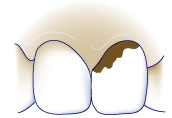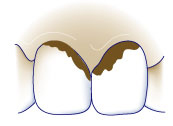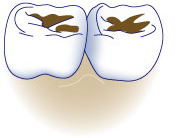Bacteria & Plaque
Daily brushing and flossing are the building blocks of a good oral care program. The primary reason to brush and floss daily is to disrupt and remove plaque — that colourless, sticky film of bacteria that grows on and in between your teeth and under your gums.
Plaque is one of the main causes of tooth decay and gum disease. Left to accumulate, plaque can cause cavities, bleeding gums, destruction of tooth-supporting bone and even tooth loss. In fact, gum disease is one of the leading causes of tooth loss in adults today.
There are 3 target spots where plaque is commonly found
|
|
|
1. Gum line | 2. Between teeth | 3. Grooves on the biting surface of posterior teeth |
How can bacteria harm teeth and gums?
The bacteria in plaque produce acid that can eat right through tooth enamel (the hard, protective covering on your teeth), This opens the way for cavities to develop. Plaque also irritates the gums, leading to gum disease, which in its early stage is called gingivitis.
However, plaque is easy to control if you follow these simple steps:
Brush your teeth at least twice a day. Use a soft-bristled brush and make sure the toothbrush fits comfortably in your mouth and lets you reach all areas easily. Plus, you should use a toothpaste that contains fluoride to help protect your teeth from decay.
Cleaning between teeth is essential. Did you know that if you don’t floss, you’re leaving up to 40 percent of your tooth surfaces untouched and unclean?
Visit your dentist and hygienist regularly – at least twice a year for professional cleaning and oral exams.
Last but not least...
Eat right! A good, well-balanced diet goes a long way toward good dental health. So, be sure to choose foods from the five major food groups, watch how much you snack between meals and limit sugary foods to mealtimes only.



